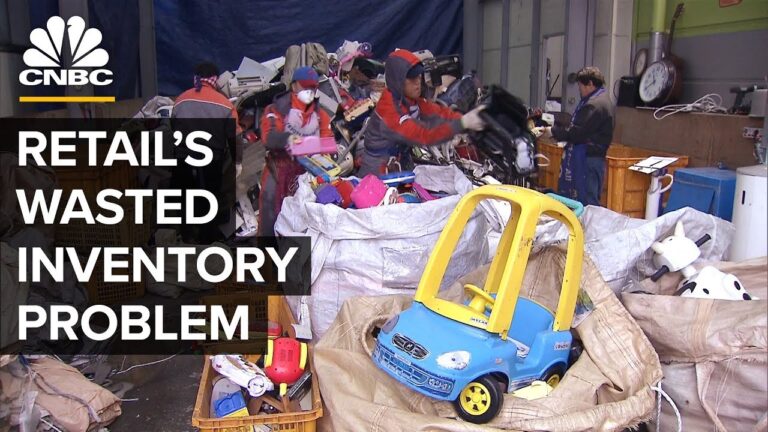The Issue of Unsold Inventory in Retail.
As per this CNBC Report – Every year, Amazon and other retailers end up with billions of pounds of excess, unsold inventory that they’re sending straight to landfills, or incinerating. Returns in the U.S. create more than 5 billion pounds of waste in landfills each year, and more than 15 million metric tons of carbon dioxide. The problem is only growing as Amazon leads the way in bringing more shoppers online, where the rate of returns is 25%, compared to just 9% for in-store purchases.
Possible Scenarios for tackling this issue are as follows:
- Return to Stock
- Return to Vendor
- Return to Customer
- Remarket to Business / Liquidation of goods
- Donation
- Use of AI and Data Science (for better Inventory Management)
Now, the e-commerce giant and other tech companies and retailers are increasing donation efforts and using data and A.I. to cut back on the wasted inventory clogging our landfills and our planet. Watch the Video to know more.
Liquidation of Unsold Inventory
As per this CNBC Report, Record number of online returns has created a booming $644 billion liquidation market. As supply chain backlogs cause shortages of new goods and Gen Z shoppers demand more sustainable retail options, pain points for one sector of retail are big business for another.
The nation’s only major public liquidator, Liquidity Services, resells unclaimed mail, items left at TSA checkpoints, and outdated military vehicles. It also refurbishes highly sought after electronics, from noise-canceling headphones to the machines that make microchips.
Liquidity Services Returns Warehouse
It contains unwanted goods from Amazon and Target are stacked to the ceiling before being resold on Liquidation.com or a variety of other marketplaces. Inside Liquidity Services’ 130,000-square-foot warehouse in Garland, Texas, the aisles aren’t lined with typical merchandise. Instead, they’re stacked with returns from Amazon, Target, Sony, Home Depot, Wayfair and more, all in the process of being liquidated.
“Liquidators are coming in and they’re buying up all of this product in bulk. They’re then packaging it, palletizing it and reselling it, either to be resold on a site like eBay or Poshmark, or even to individual consumers. So it’s turned into a much bigger portion of the industry than we’ve ever seen before,”
Sonia Lapinsky of consulting group AlixPartners.
The Liquidation Market
It has more than doubled since 2008, reaching a whopping $644 billion in 2020, according to data from Colorado State University. In 2021, a record 16.6% of all merchandise sold was returned, up from 10.6% in 2020, according to the National Retail Federation.
“A lot of this used to be controlled by the mafia,”. “It’s a good way to hide money, honestly, because nobody’s looking at returns. Especially 40 years ago, no one was looking at returns.”
Zac Rogers, assistant professor of supply chain management at Colorado State University
Average Rate of Return
For online purchases, the average rate of return was even higher, at 20.8%, up from 18% in 2020. Processing a return can cost retailers up to 66% of an item’s original price, according to returns solution company Optoro.
“Everyone’s very worried about price increases right now. I would suggest that it’s possible part of the inflation is these huge amount of returns, that have to be sold at a loss, is detracting from the profitability that a company normally has, and they have to raise their prices,”
Tony Sciarrotta, executive director of the Reverse Logistics Association.
Environmental Cost
There’s also a big environmental cost. Returns that aren’t liquidated are often destroyed by being incinerated or sent to landfills. Optoro estimates U.S. returns generate an estimated 16 million metric tons of carbon emissions and create up to 5.8 billion pounds of landfill waste each year. This pain point for mainstream retailers is now big business for liquidators.
GoodBuy Gear
There are now thousands of companies in the booming space. One of them is GoodBuy Gear, which specializes in safely liquidating items for babies and young kids.
“Buying one used item, it saves 82% of its carbon footprint and consumers are really starting to make smart choices. And so I think that the boom in liquidation is really fueled by consumerism and how it’s shifted from new to used,”
Kristin Langenfeld, CEO and co-founder of GoodBuy Gear.
Watch the video for an exclusive tour inside a Liquidity Services Warehouse, to see the booming business of processing and reselling excess and unwanted goods on the secondary market.


